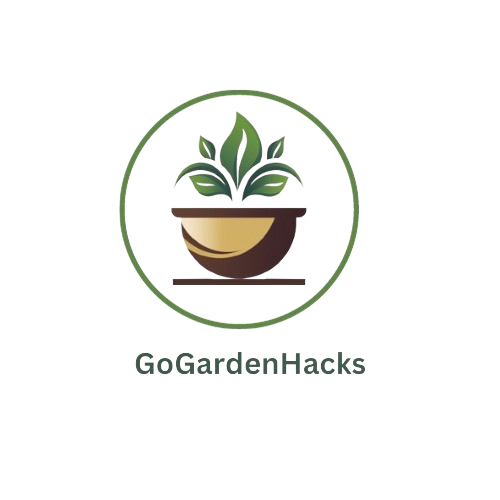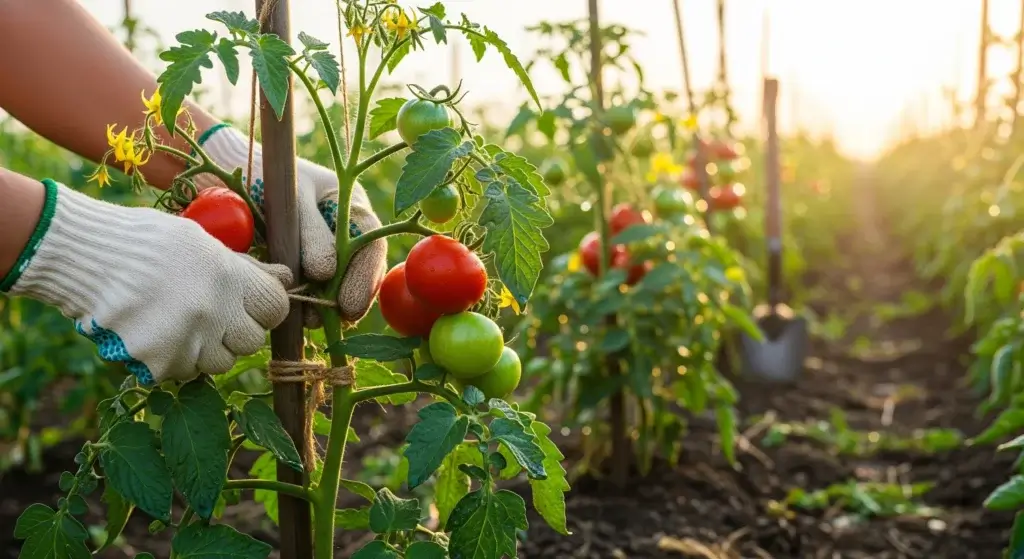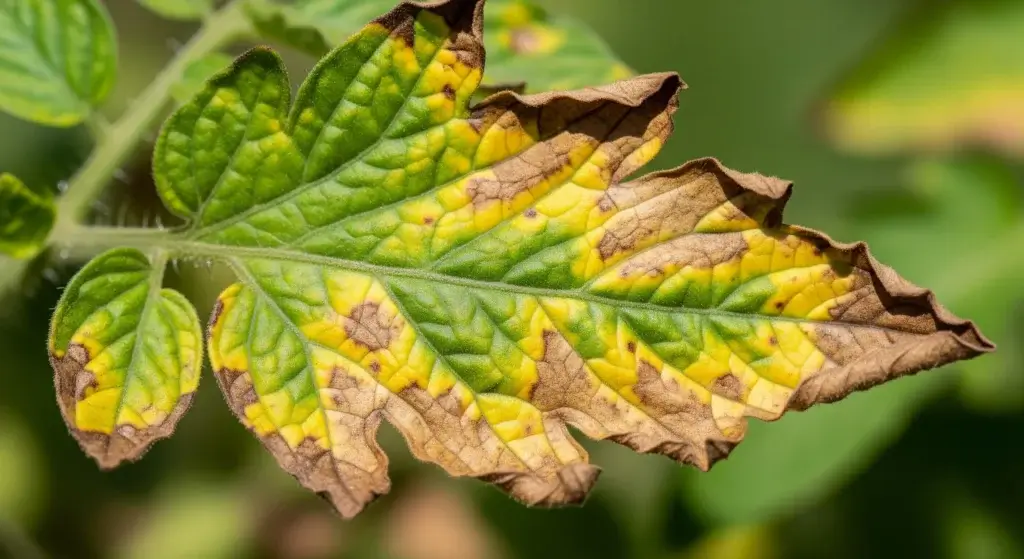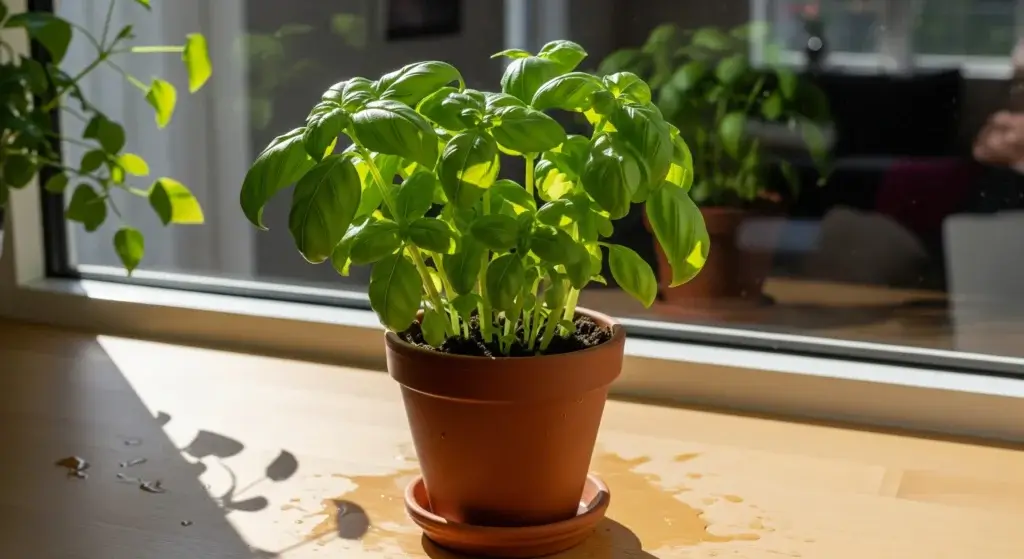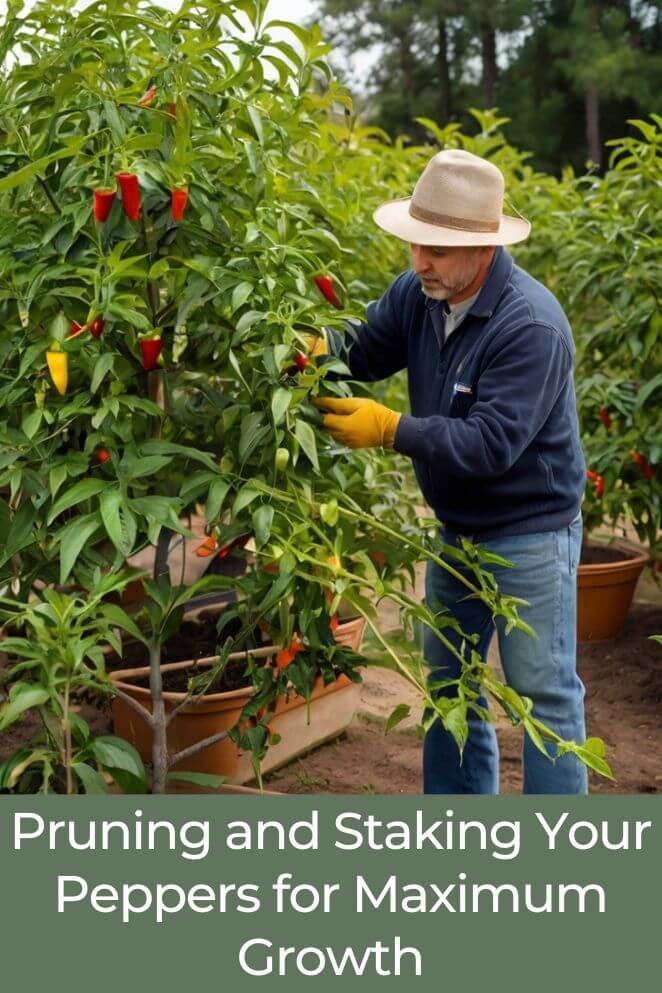
Growing peppers can be a rewarding experience, but to get the best yield, you need to care for them properly.
Two of the most effective techniques for boosting pepper plant health and production are pruning and staking.
These methods help strengthen the plant, improve airflow, and encourage more fruit production.
Whether you’re growing bell peppers, jalapeños, or habaneros, pruning and staking can make a significant difference in your harvest.
In this guide, we’ll break down everything you need to know to grow strong, healthy pepper plants.
Understanding Pruning
What is pruning?
Pruning is the practice of trimming specific parts of a plant to help it grow healthier and produce more fruit.
For peppers, this typically means cutting away extra leaves, small shoots (called suckers), and weak branches.
By doing this, you help the plant focus its energy on growing stronger and yielding a better harvest.
It’s like giving your plant a little tune-up to keep it thriving!
Benefits of Pruning Peppers
Pruning your pepper plants comes with several key advantages that can make a big difference in your garden:
Increased yield
When you trim away extra leaves and branches, the plant can focus its energy on growing more peppers instead of maintaining unnecessary foliage.
This means a bigger, better harvest for you!
- Read also: Weather Woes: Is the Weather Sabotaging Your Pepper Plants?
- Read also: A Comprehensive Guide: Do Peppers Need a Lot of Nitrogen?
Better air circulation
Thinning out dense leaves helps air flow more freely around the plant.
This reduces the risk of fungal diseases, like powdery mildew, which thrive in damp, crowded conditions.
Stronger plants
Cutting back weak or overgrown branches encourages the plant to grow sturdier stems.
This is especially important when the plant is heavy with fruit, as it helps prevent branches from breaking.
Pest control
Dense foliage can be a hiding spot for pests like aphids and whiteflies.
Pruning removes these hiding places, making it easier to spot and manage pests before they become a problem.
When to prune
Knowing when to prune your pepper plants is just as important as knowing how.
Here’s a simple guide based on their growth stages:
Early pruning (seedling stage)
When your pepper plant grows to about 6 inches tall, pinch off the very top (the growing tip).
This encourages the plant to grow bushier and stronger, setting it up for a healthier life.
Mid-season pruning
Once your plant starts flowering, it’s time to tidy it up a bit.
Remove the lower leaves and any weak or damaged branches.
This helps the plant focus its energy on producing flowers and, eventually, peppers.
Late-season pruning
As the growing season winds down, trim away excess leaves.
This helps the plant put all its energy into ripening the remaining fruit, giving you a final, flavorful harvest before the season ends.

How to Prune Your Peppers
Tools Needed
Before you start pruning, gather the following tools:
- Sharp pruning shears or garden scissors
- Gloves to protect your hands
- Disinfectant (like rubbing alcohol) to clean your tools and prevent disease spread
Step-by-step pruning process
Pruning your pepper plants doesn’t have to be complicated.
Follow these simple steps to keep your plants healthy and productive:
Identify suckers
Look for small shoots growing where the main stem meets a branch.
These are called suckers, and they can steal energy from the plant.
Snip them off to keep your plant focused on growing strong and producing peppers.
Remove unnecessary growth
Trim away lower leaves and any weak or crossing branches.
This helps improve air circulation and directs energy to the healthier parts of the plant.
Trim the top (optional)
If you want your plant to grow bushier, cut the top of the main stem once it reaches about 1 foot tall.
This encourages the plant to spread out and grow more branches.
Clean up dead leaves
Regularly check for yellow or dying leaves and remove them.
This keeps the plant tidy and prevents diseases from spreading.
Understanding Staking
What is staking?
Staking is the practice of using stakes, cages, or trellises to support pepper plants and keep them standing tall.
As peppers grow and produce fruit, their stems can become heavy and prone to bending or breaking.
Staking provides the extra support they need to stay healthy and productive, ensuring your plants can handle the weight of their own success!
Benefits of staking peppers
Staking your pepper plants isn’t just about keeping them upright—it’s a simple step that can make a big difference in their health and productivity.
Here’s why staking is worth the effort:
Prevents stem breakage
As pepper plants grow and produce fruit, their branches can become heavy and start to droop.
Without support, these branches might snap under the weight of the peppers.
Staking provides the extra strength they need to stay intact, so you don’t lose any of your hard-earned harvest.
Improves airflow
When pepper plants are supported and kept upright, air can circulate more freely around them.
This reduces the risk of fungal diseases, like powdery mildew, which thrive in damp, crowded conditions.
Better airflow means healthier plants and fewer problems down the line.
Easier harvesting
Let’s face it—picking peppers from a tangled, drooping plant can be a hassle.
Staked plants are neater and more organized, making it much easier to spot and harvest your peppers.
No more digging through a jungle of leaves!
Boosts sun exposure
When plants are upright and well-supported, their leaves and fruit receive more even sunlight.
This helps the peppers ripen more consistently and improves their overall quality.
Plus, sunlight is essential for photosynthesis, which keeps your plants strong and thriving.

How to Stake Your Peppers
Materials needed
- Wooden stakes, bamboo stakes, or tomato cages
- Soft plant ties, garden twine, or Velcro ties
- Rubber-coated wire (optional) for heavier plants
Step-by-step staking process
Staking your pepper plants is a straightforward process that can make a world of difference in their growth and productivity.
Here’s how to do it step by step:
Choose the right support
Start by picking the best support for your pepper plants.
For smaller varieties, like chili peppers, tomato cages work great.
For larger plants, such as bell peppers, wooden or bamboo stakes are a better choice.
The key is to match the support to the size and weight of your plants.
Insert the stake or cage
Carefully place the stake or cage about 2–3 inches away from the base of the plant.
Push it 6–12 inches into the soil to make sure it’s stable and secure.
This ensures it won’t tip over as the plant grows taller and heavier.
Tie the plant loosely
Use soft ties, like garden twine or cloth strips, to gently attach the main stem of the plant to the stake.
Make sure the tie is snug but not too tight—you want to allow some room for the plant to grow and move naturally.
This prevents damage to the stem while still providing support.
Adjust as needed
As your pepper plant grows, keep an eye on it.
You may need to add more ties to support new branches or adjust existing ones to accommodate the plant’s growth.
Regular check-ins ensure your plant stays upright and healthy throughout the season.

Tips for Successful Pruning and Staking
Common mistakes to avoid
While staking and pruning your pepper plants can be incredibly beneficial, there are a few common mistakes that can do more harm than good.
Over-pruning
It’s easy to get carried away with pruning, but removing too many leaves can actually harm your plant.
Leaves are essential for photosynthesis, which helps the plant grow and produce fruit.
Stick to trimming only what’s necessary to keep your plant healthy and strong.
Pruning too late
Timing matters! If you prune too late in the season, you might accidentally cut off branches that are about to produce fruit.
This can stunt your harvest.
Aim to prune earlier in the season when the plant is still actively growing.
Using wire ties
When staking your plants, avoid using harsh materials like wire to tie them.
These can cut into the stems and damage the plant.
Instead, opt for soft ties, like garden twine or cloth strips, which provide support without causing harm.
Ignoring the weather
Staked plants are better equipped to handle strong winds, but pruned plants can be more vulnerable to extreme weather.
If you’ve recently pruned, keep an eye on the forecast and protect your plants if harsh conditions are expected.
A little preparation can save your plants from unnecessary stress.
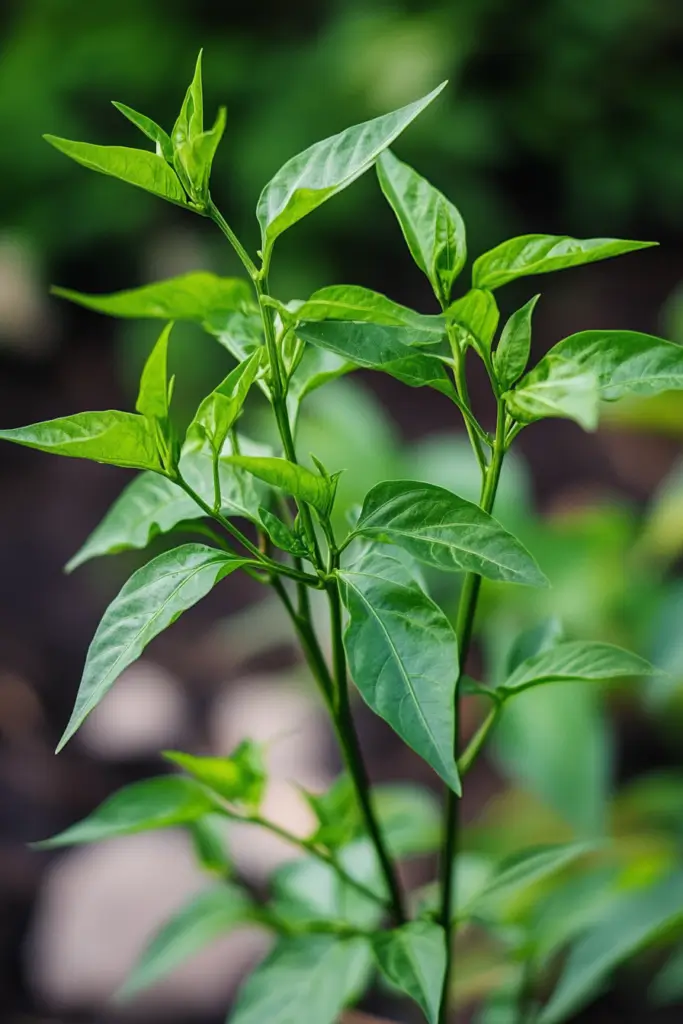
Best practices
To keep your pepper plants healthy and thriving, follow these simple but effective tips.
They’ll help you avoid common problems and set your plants up for success:
Disinfect your tools
Before you start pruning, make sure your tools are clean.
Wipe them down with rubbing alcohol or a disinfectant to prevent spreading diseases from one plant to another.
Clean tools mean healthier plants!
Stake early
Don’t wait until your plants are big and heavy to add support.
Install stakes or cages when the plants are still young.
This helps avoid damaging the roots later and gives your plants the support they need from the start.
Regularly check ties
As your plants grow, their stems will thicken and expand.
Check the ties every week or so to make sure they’re not too tight.
Loosen or adjust them as needed to prevent cutting into the stems, which can harm the plant.
Prune in dry conditions
Always prune your plants when the weather is dry.
Wet leaves can spread fungal infections, so it’s best to wait for a sunny day.
This small step can save you from big headaches later.
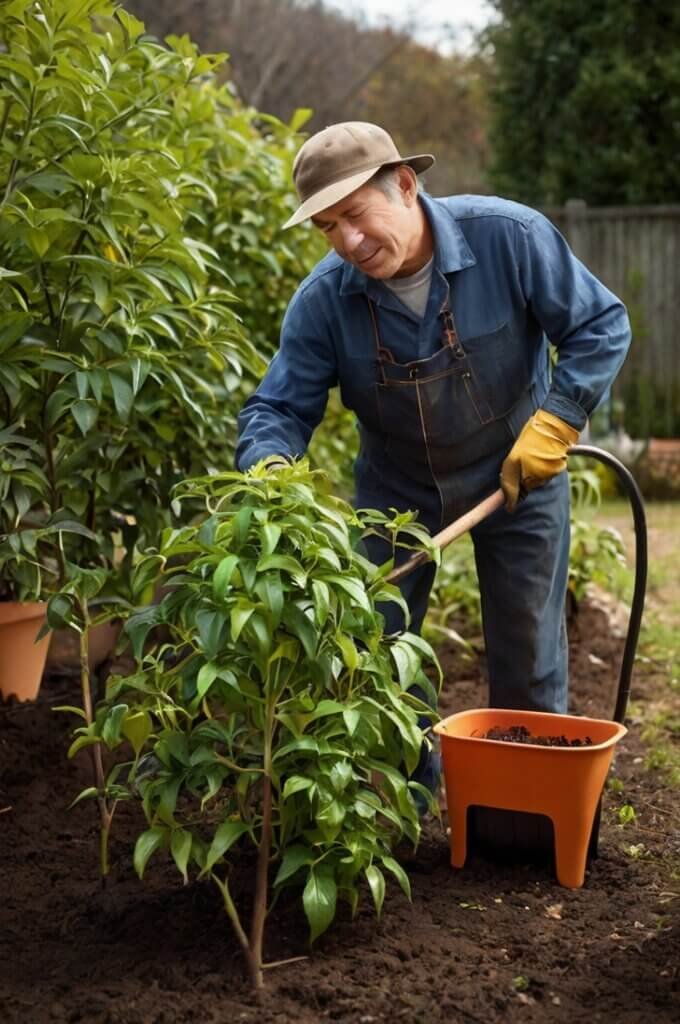
- Read also: Understanding Phosphorus Deficiency in Pepper Plants
- Read also: Are Your Peppers Curling? Here’s Why and How to Fix It
Final Thoughts
Pruning and staking your peppers are simple yet powerful techniques to improve plant health and yield.
By removing unnecessary growth and providing proper support, you help your peppers focus on producing larger, healthier fruit.
Whether you’re growing a small backyard garden or a larger farm, following these steps will ensure a bountiful harvest!
